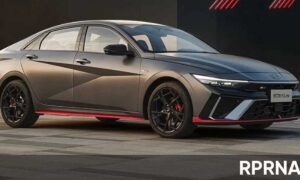As reported, the German carmaker Volkswagen Group declared that it will load all its pure electric vehicles with “V2G technology” in the future. Services related to the return of electricity to the grid help stabilize the fluctuating supply of renewable energy.
The full name of V2G is “Vehicle-to-grid”. By using electric vehicle energy storage facilities as an adjustable load, it focuses on smoothing grid fluctuations and increasing the consumption of renewable energy.
When the electric vehicle is not in use, the electric energy of the onboard battery is sold to the grid system. If the onboard battery requires to be charged, the current flows from the grid to the vehicle.
Germany’s annual leakage of electricity is as much as 6500Gwh, equivalent to 1% of the country’s annual electricity consumption. Forced to discharge in the weather.
According to estimates by the Volkswagen Group, if there are 2.7 million pure electric vehicles with two-way or V2G functions, they can absorb part of the electrical energy and release it to the grid when the power is insufficient.
In this way, pure electric vehicles can help network operators better manage power supply fluctuations. Volkswagen intends to include V2G in every pure electric vehicle built on the MEB platform from 2022. In addition to Volkswagen, it also includes sister brands such as Audi, Skoda, and SEAT, Cupra.
It is reported that the production of these models will stop in December, and pure electric vehicles equipped with two-way charging will be launched after the end of the year. It is estimated that 300,000 vehicles will be produced at the Volkswagen plant in Zwickau in 2022.
Thomas Ulbrich, a member of the Volkswagen Development Committee, said: “This will be a win-win situation.” He also said that it will take several years to build a virtual energy storage system using electric vehicles.
Although Volkswagen has stated that it hopes to have 10 million new-generation electric vehicles on the road by 2030, consulting firm Deloitte estimates that 6.35 million are more realistic.
Additionally, there are also uncertainties in supervision, like how to price the electricity stored in this way. It is estimated that at some point in the future, the regulator may cooperate with automakers, Volkswagen seems to want to take the lead.
In fact, as early as 2013, Nissan and Mitsubishi introduced V2X technology, also known as two-way charging technology. That is, electric vehicles can return unnecessary electricity to the grid.
Among them, Nissan Leaf has been tested in Australia. In addition, Hyundai IONIQ 5 and Kia EV6 will also be furnished with this feature, allowing car owners to use their vehicles to charge other devices.

(Via)













